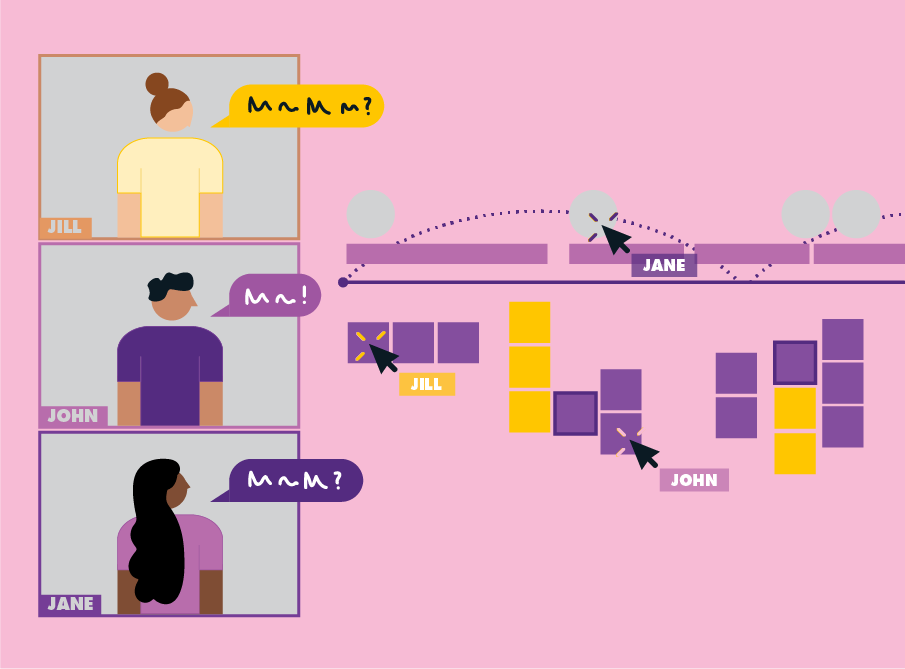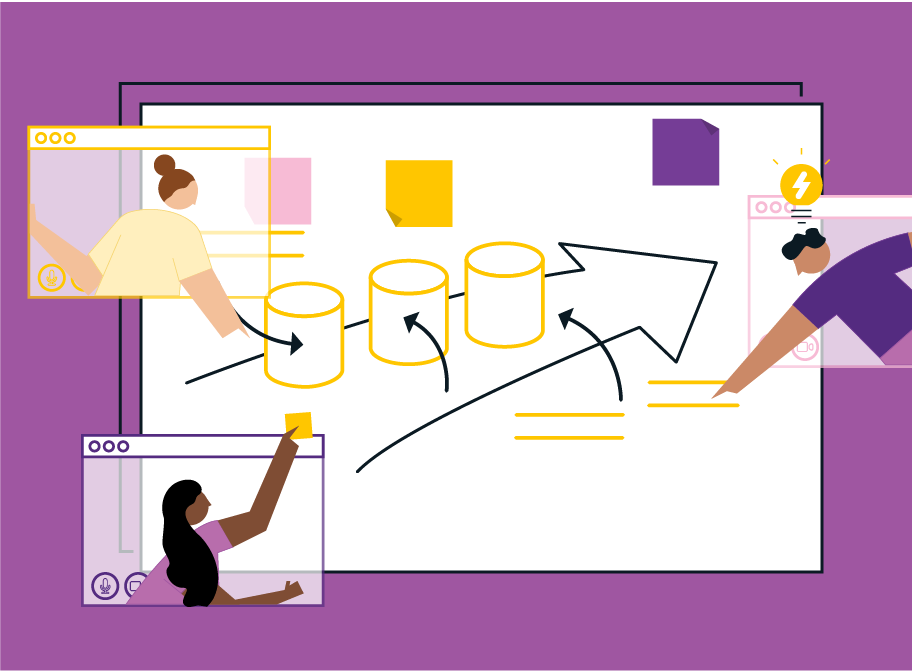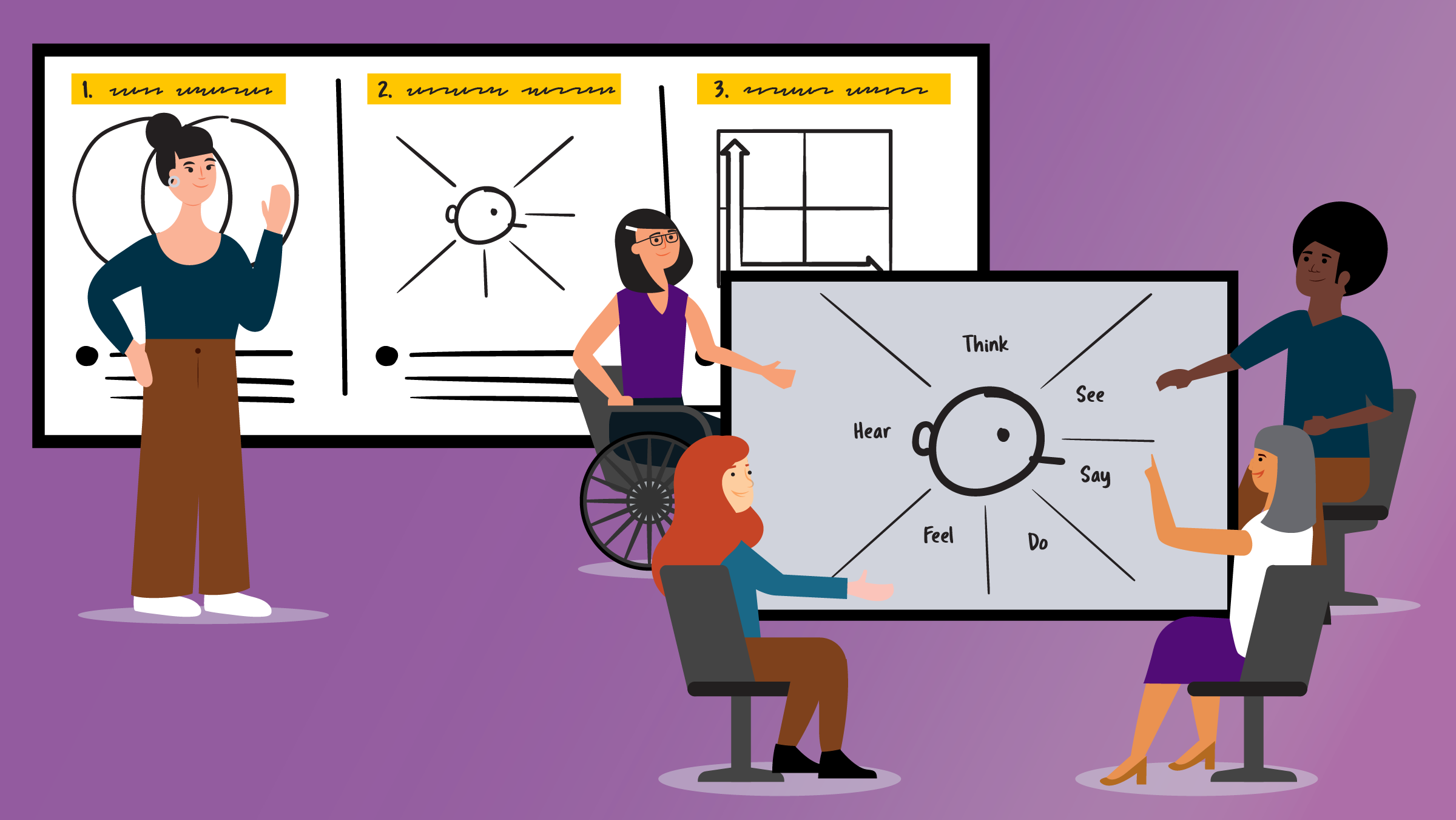Updated June 11, 2024
It’s like clockwork. Three minutes into any phone conversation, my 90-year-old father cheerfully proclaims, “I’m all talked out.” And he’s out. You might be feeling the same about virtual meetings these days. All zoomed out. We get it.
What if there was a scientifically proven practice that could breathe new life into your virtual meetings—and do much, much more? I’m talking about visual thinking, a powerful skill that taps into our deepest biological capability for understanding.

What’s so great about visual thinking?
- Drive conversations and decisions: Get your team unstuck by using visual facilitation techniques to quickly generate, reframe, and prioritize ideas.
- Ideate and explore possibilities: Inspire your team to work more collaboratively and leverage their collective creativity to craft new solutions.
- Clarify and communicate ideas: Bust through complexity and communicate more effectively by using simple visuals to bridge understanding when words alone can get lost, create confusion, or misunderstanding.

What can you do with visual thinking?
While visual thinking can have an infinite number of possibilities from storytelling to idea generation, it has proven to be a powerful asset in virtual collaboration by making conversations visible.
Whether you’re illustrating ideas or using a simple framework with sticky-notes to work through a challenge, visual thinking can help teams better follow one another’s thinking, build on each others ideas, and see possibilities and disconnects clearly.

How does visual thinking change group dynamics?
Visual thinking draws people together, creates synergy, breaks down boundaries, and cements collaboration.
During my Visual Thinking Bootcamp experience, I watched perfect strangers quickly bond through the language of visual thinking. People were immediately engaged and seemed less inhibited when sharing. Just one hour in, folks were more freely exchanging ideas and supportive of each others work. Someone in our group asked, “are we starting to share a similar language?” we nodded in agreement, noting how visual thinking creates alignment and clarity.

Can anyone be a visual thinker?
You don’t need to be a gifted artist to be a visual thinker—you only need to be open to new ways of working and be willing to practice and apply what you learn. And, yes, some drawing is required.
Visual thinking is a universal language that anyone can learn, a language that the human brain is hardwired to understand. When everyone seems “zoomed out,” visual thinking can renew your team’s energy, engage them, and get them “zoomed in” on solving problems and getting great ideas off the ground.
What’s it like to attend a Visual Thinking Bootcamp?
An unusual but irresistible assignment brought me to my first Visual Thinking Bootcamp. As a Portland-based freelance writer, I was asked to attend a two-day bootcamp and share my experience. So on a couple drizzly Oregon days in the fall, I joined visual thinking newbies and masters alike to explore the uncanny power of visual thinking to unlock our deepest knowledge of the world around us and the wisdom within us—not to mention the magic of collaborating with some darn talented folks. The experience was incredibly fun and illuminating.
At bootcamp, I was sure I’d be an outsider among “real professionals,” but I was wrong. From teachers to team leaders, artists to engineers, project managers to facilitators, visual thinking bootcamps attract a wide array of people. In my group alone were folks from across the country, as well as from Canada and Spain, all there to learn how visual thinking could make their workplaces and worlds better:
- A psychologist from Edmonton who uses visual thinking in her own workshops to get conversations flowing.
- A municipal group facilitator who uses visual thinking to get people unstuck and move them past challenges.
- A website development project manager who uses visual thinking to clarify intangible or nebulous ideas.
- An engineer from Louisville who wants to use visual thinking to bridge gaps between her multinational company’s teams to streamline operations.
- A risk manager looking for a way to simplify and present complex risk management concepts.
Interested in learning visual thinking with your team?
XPLANE now offers a variety of team and group learning experiences. Contact them today to learn more.
Not ready for a course? Take a deeper dive into the topic and peruse XPLANE’s visual thinking blog posts or download their popular “How to Draw Your Idea” booklet.
Finally, if you have thoughts to share or questions about visual thinking, get in touch with XPLANE—they’d love to hear from you.

How to Enhance Your Facilitation Skills Using Visual Communication Tools
Do you want to be a more creative leader? A more effective facilitator? It may be time to try visual thinking—that is, externalizing your ideas

How to Draw Your Idea and Move People to Action: An Exercise in Visual Communication
Want to help people understand and move ideas to action quickly? It may be time to try your hand at drawing your ideas. Visual communication

The Key to More Effective One-on-Ones? Visuals!
One-on-ones are a building block of strong organizations, yet too often these critical meetings fall short of their true potential. Want to lead more meaningful
